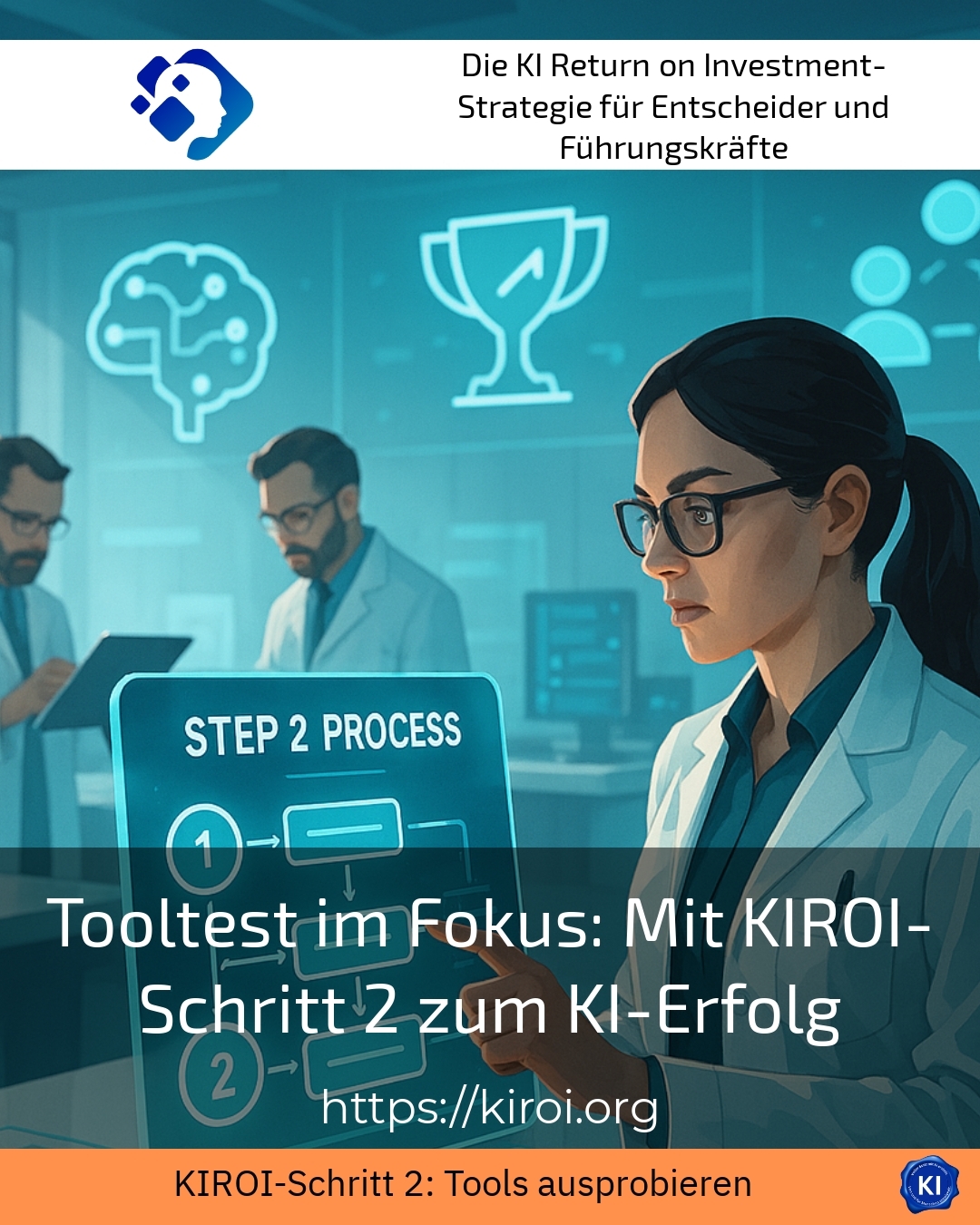In the digital transformation, the selection of suitable software solutions is becoming increasingly important - the tool test is a central component of this. As part of KIROI Step 2, this structured test process helps companies to identify and individually evaluate suitable tools. This makes it possible to realise sustainable AI success in operations using targeted methods.
Why the tool test in KIROI step 2 is crucial
The tool test begins with a thorough analysis of a company's specific requirements and use cases. Not only the technical functions, but also user-friendliness and integration capability are important criteria. Particularly in industries such as manufacturing or the service sector, it is clear that tools only provide long-term support if they are customised to processes.
For example, industrial companies benefit from tool tests that evaluate early warning systems for error detection. This minimises production downtime and stabilises processes. In office organisation, tool testing focuses on simplifying routine tasks such as data management through automation. Marketing departments also use SEO tools to identify gaps in their keyword strategy and analyse competitors in a targeted manner.
In addition, a continuous tool test promotes adaptation to changing requirements. This turns the one-off selection process into a dynamic instrument that supports long-term optimisation.
Tool testing in practice: examples from various industries
BEST PRACTICE with one customer (name hidden due to NDA contract) The tool test enabled an SEO tool to be implemented in a medium-sized service company that impressed with its in-depth competitive analysis and keyword gap analysis. This measurably improved the visibility of the company's own content.
In technical plant engineering, the tool test was used to select monitoring software that monitors production data in real time. This enabled potential faults to be recognised and rectified at an early stage, which increased plant availability.
Another example is provided by the insurance sector, where AI-supported chatbots were tested with the help of the tool test. These relieve the burden on customer service by pre-qualifying enquiries and processing simple cases automatically.
Tool testing as a process: from analysis to integration
The tool test comprises several important steps. Firstly, work processes and automation requirements must be precisely recorded. Various solutions are then systematically trialled, including in pilot projects. It is also crucial to test usability and adaptability to existing systems.
In the financial sector, for example, compliance tools are being tested that not only fulfil legal requirements but can also be integrated into existing reporting systems. This reduces risks and enables smoother audits.
In retail, it is inventory optimisation tools that are selected with the help of the test. Data analysis options and interfaces to checkout systems play a key role here.
How transruptions coaching supports tool testing projects
Many companies experience challenges in choosing the right approach and implementing new technologies during tool tests. This is where transruptions coaching offers valuable impetus to steer the process in a targeted manner. It assists decision-makers in the selection process, promotes communication between the business and IT departments and supports sustainable integration.
BEST PRACTICE with one customer (name hidden due to NDA contract) During a major digitalisation project, transruptions coaching ensured that automation tools were selected on the basis of a thorough tool test. This increased employee acceptance and efficiency gains were realised quickly.
In the healthcare sector, coaching helped to analyse sensitive processes and select suitable AI solutions that meet data protection requirements and optimise treatment. In the logistics sector, coaching processes also identified the right tools for route optimisation in order to reduce costs and shorten delivery times.
My analysis
The tool test as an integral part of KIROI step 2 is essential to ensure sustainable success in the use of AI technologies. It not only promotes the selection of suitable tools, but also strengthens acceptance and practical benefits in day-to-day business. The diverse application examples show that the tool test can provide impetus across all industries and point the way to more efficient processes and better results.
Further links from the text above:
[1] Tool test in KIROI step 2: How decision-makers find the best
[2] AI tools - nine practical helpers for everyday life
[3] The 15 best (AI) tools for more productivity
[4] Guide to AI workflow automation
[8] Introducing AI in your company - 8 simple steps
[9] Focus on tool testing: success factor in KIROI step 2
For more information and if you have any questions, please contact Contact us or read more blog posts on the topic Artificial intelligence here.















